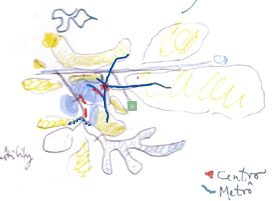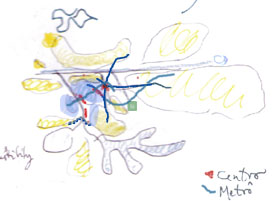| Space
is defined through the relationships between its elements: locations
Relationships: building of infrastructure (State) A location is posited as a commodity (private property) and its price regulates spatial organization of activities But it cannot be produced (as a commodity) |
| So
far as rents, profits, wages, prices, are determined by competition, laws
may be assigned for them. Assume competition to be their exclusive regulator,
and principles of broad generality and scientific precision may be laid
down, according to which they will be regulated. The political economist
justly deems this his proper business: and as an abstract or hypothetical
science, political economy cannot be required to do, and indeed cannot
do, anything more. But it would be a great misconception of the actual
course of human affairs, to suppose that competition exercises in fact
this unlimited sway.
John
Stuart Mill Principles..., 1848: II.4.2
Competition
is induced (infrastructure) and restricted (regulations) by the State |
Intervention in space: an example
| Consider
urban structure (right, top) and a location L in it (green spot):
- Use value of L is one of the lowest (indeed, a favela in SP) Consider building two Metrô lines: Southwestern and Northeastern (right, bottom): - Effects of SW line: (already high) prices along it do not go up; rise in Centre and fall in extreme southern sub-centre (Berrini) - Effects of Northeastern line: prices rise at location L and the whole Eastern zone fall somewhat everywhere else |

